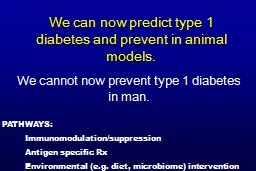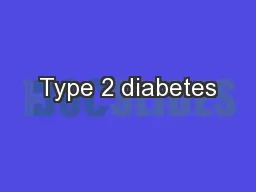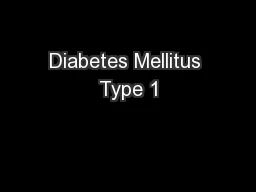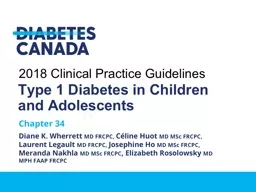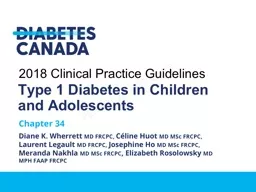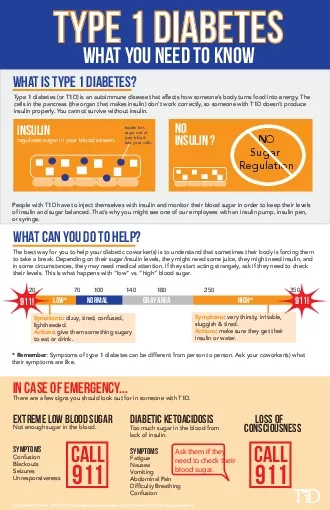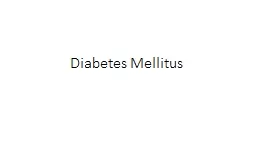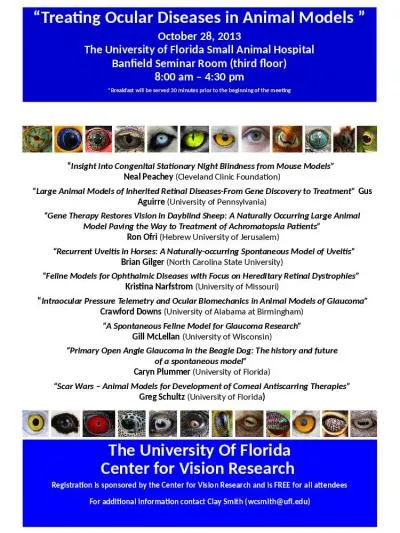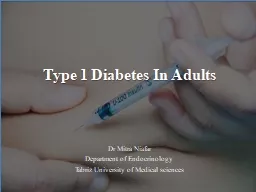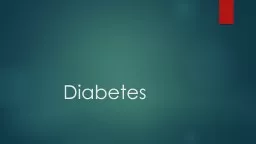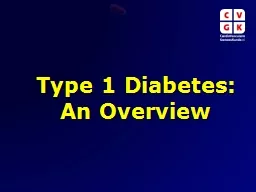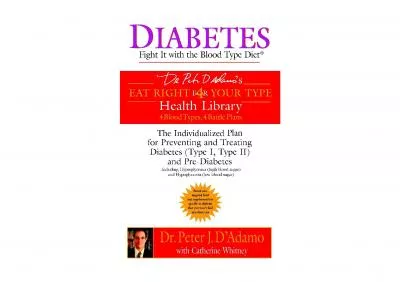PPT-We can now predict type 1 diabetes and prevent in animal models.
Author : patchick | Published Date : 2020-06-16
We cannot now prevent type 1 diabetes in man PATHWAYS Immunomodulationsuppression Antigen specific Rx Environmental eg diet microbiome intervention General
Presentation Embed Code
Download Presentation
Download Presentation The PPT/PDF document "We can now predict type 1 diabetes and p..." is the property of its rightful owner. Permission is granted to download and print the materials on this website for personal, non-commercial use only, and to display it on your personal computer provided you do not modify the materials and that you retain all copyright notices contained in the materials. By downloading content from our website, you accept the terms of this agreement.
We can now predict type 1 diabetes and prevent in animal models.: Transcript
Download Rules Of Document
"We can now predict type 1 diabetes and prevent in animal models."The content belongs to its owner. You may download and print it for personal use, without modification, and keep all copyright notices. By downloading, you agree to these terms.
Related Documents

